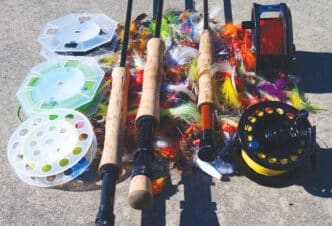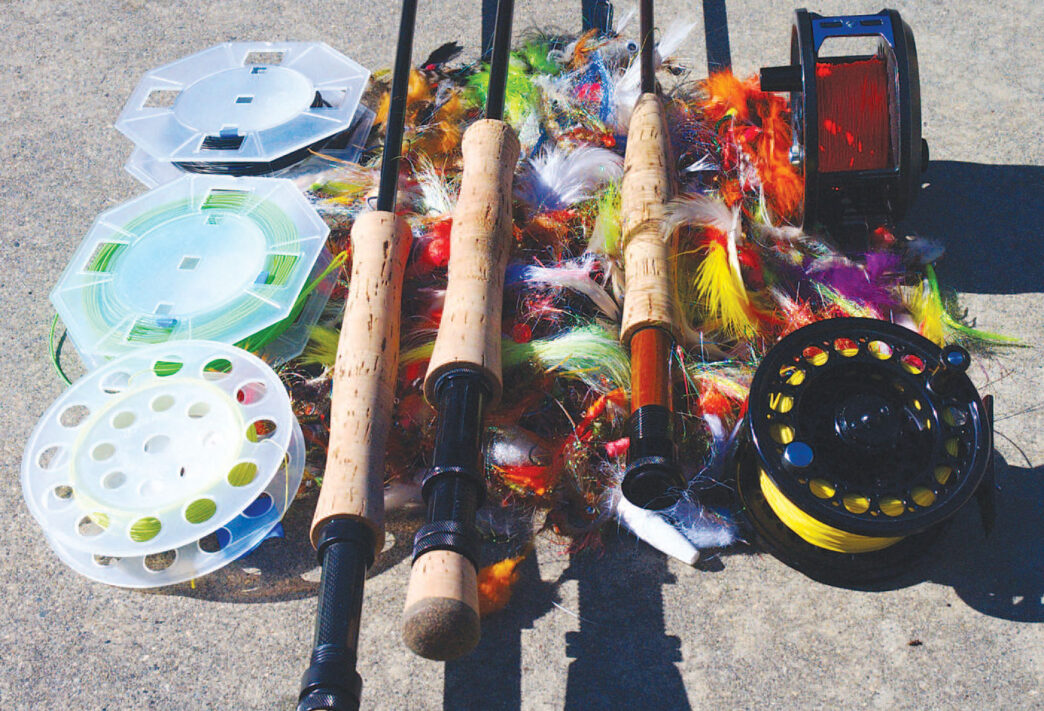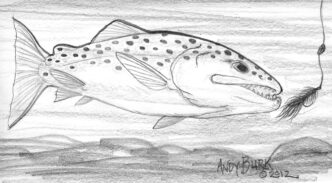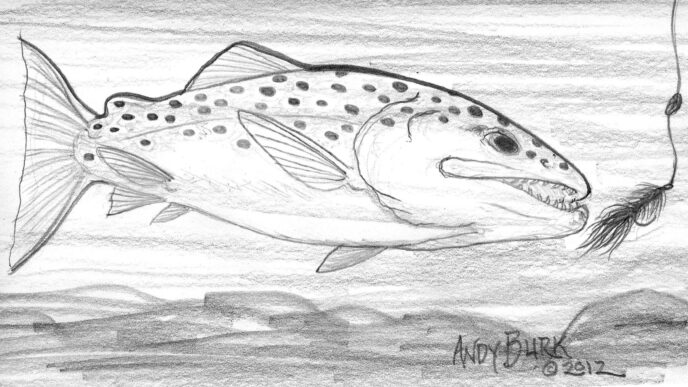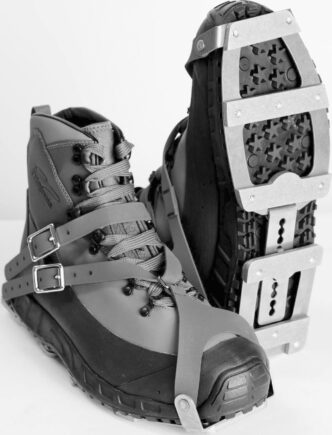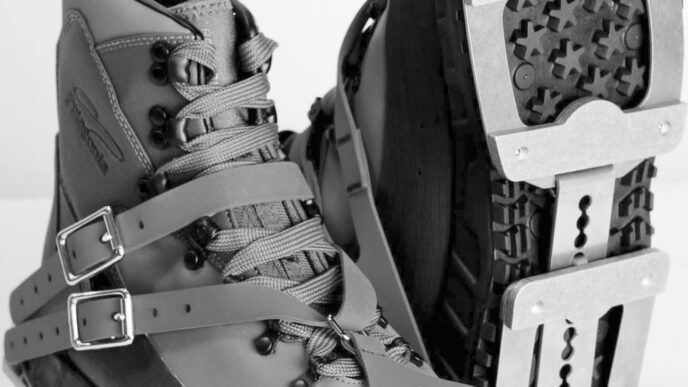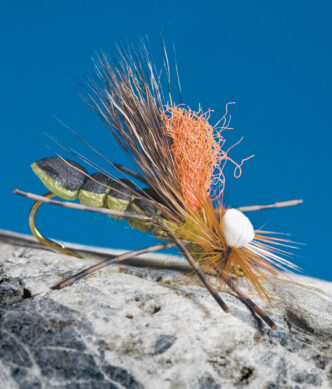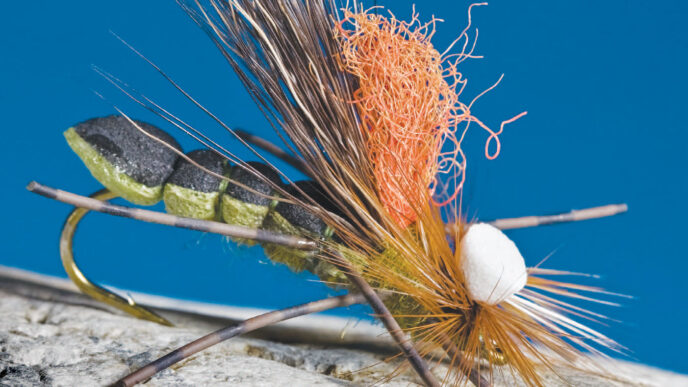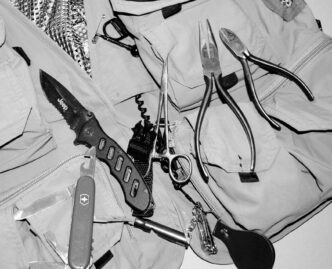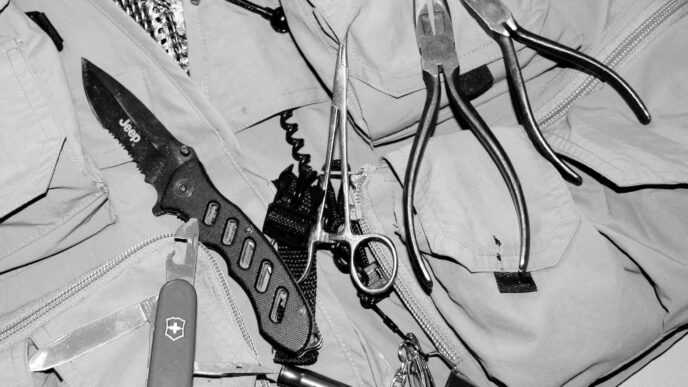I am not ashamed to admit that over the years, I have spent quite a bit of money on fly-fishing tackle. What bothers me is some of the gear has failed to live up to the claims made by the manufacturer or by supposedly expert fly-fishing writers. I guess I was a little naïve to believe any rod could readily deliver Rajeff-like distance or that a reel could actually stop a spooked wildebeest. These days, fly fishers have an astounding number of choices when it comes to tackle. Most of the stuff on the market is pretty good, but the old saying “buyer beware” still applies. I figured a brief examination of some of my mistakes might help others.
Rods with Feeling
Before you decide to purchase a new rod, I’d like to make a suggestion. Locate a casting instructor or a guide who really knows his stuff and get some professional help with your casting. This will undoubtedly do more for your casting than any rod you will ever buy.
It’s claimed that technological advancements in the multibillion-dollar world of aerospace have played an important role in making modern rods better, and that’s true. You have only to pick up an old fiberglass rod to notice how fly rods have gone on a serious weight-loss program. But technology isn’t the whole story. I have been watching people cast fly rods for over 40 years. Given all the hype, you’d assume that today’s rods would make most fly fishers better casters. They don’t. The general level of casting skill remains much the same now as it was back in the era of glass. So clearly, rod design is not the most significant factor influencing casting performance. The dominant factor now, as it was four decades ago, is the person holding the rod. As every guide or fly-casting expert will state, time and time again, when it comes to casting, good technique trumps good tackle every day.
OK, you read that paragraph and, just as when Mom told you to eat your greens, you are going to ignore it. I tried.
There is a closet in my home office where I store my fishing tackle. Stacked in the corner is a tangled coppice of graphite twigs. This is where many of the supposedly “perfect” rods I have purchased stay warm and dry all year long. These rods were bought based on the recommendation of others or in response to the deliberately evocative language in rod makers’ advertisements. Ask anyone who has been fly fishing for more than a few years, and I’m sure you’ll hear a similar story.
The reason many of these rods seldom see the water is because they simply did not perform as well as I had expected. There have been a couple of occasions when I have had to return rods because they were clearly faulty. Most the time, however, the problem is with the feel of the rod during casting. So much of the pleasure of fly fishing is associated with the way a rod provides tactile feedback during the cast. A rod that tells you what the line is doing is an absolute joy. As many have said before, a good fly rod feels like an extension of your arm. A good rod builds confidence and allows you to concentrate on the fishing, instead of the casting.
What constitutes a good rod in terms of feel is a very subjective issue. A rod that I might love, you may hate. In fact, I have found that over the years, as my casting improved, my taste in rods has changed. Several of the rods I used to love are now left in the closet because they feel wrong or they simply can’t do what I need them to do. This is why buying a rod based on the recommendations of others can so often lead to disappointment. So how do you go about ensuring you get a rod that will serve you well?
Ten years ago, it was still possible to find a fishing-tackle store that also offered a reasonable selection of fly gear. There might even have been a bona fide fly shop located a short drive from home. I really miss those places. They were often laid out in a totally dysfunctional way: Racks hung with assorted wading, knot-tying, and float-tube accessories would block your way as you tried to navigate a path toward the reels or rods. Waders would often reside in dark, musty corners. Shelves and boxes of fly-tying materials gave off faint wisps of formaldehyde or acetone. Customers would range from bright-eyed preteens full of nervous energy to crusty old codgers emitting “old man scent.” To step into one of these places was special in a way that only real fly fishers can hope to understand.
The proprietors of these tackle bazaars would usually let you try out a number of rods in the parking lot or in a grassy area behind the store. Many of these idiosyncratic retailers are gone now, a victim of progress and the Internet. So what are you to do? One option is to locate the nearest fly shop, which is most likely in a major city or premier fishing location, and contact them. Ask if they provide rental/demo rods, or at least the ability to cast rods prior to purchase. If the answer is yes, it’s time to plan a long drive.
Another option is to wait until winter, when the show season goes into full swing. Each year, fly-tackle manufacturers put their wares on display inside massive arenas in places such as Sacramento, Pasadena, and Pleasanton. The sheer number of rods on display at these shows is astounding. It’s very easy to get overwhelmed. To avoid mental overload, I decide beforehand what type of rod I’m looking for. I head to the show with a couple of reels loaded with the lines I want to cast. I ask several manufacturers to recommend a rod from their lineup. Every time, without fail, I am greeted warmly, my questions are answered professionally, and someone is only too happy to put a rod in my hand and point the way to the casting pool. Fifteen minutes at the casting pool or even on a grassy area will tell you if the rod is right for you. I usually try out at least six rods before deciding which make and model will be added to my arsenal.
Reels: High Tech Down to Earth
Like rods, reels have undergone significant technological improvements in the past few decades. These days, computer-controlled machining takes chunks of aerospace-grade aluminum and turns them into gorgeous devices that would not look out of place sitting on Queen Elizabeth’s head. The efficiency of the modern manufacturing process means that even relatively cheap reels are significantly stronger and more reliable than many reels from the 1960s and 1970s. Drags, in particular, appear to have undergone considerable improvement. Most of the reels on the market today have drags that transition from free-spooling to almost locked up with a turn or two of the drag knob. At any drag setting, the reel will yield line smoothly, protecting light tippets and marginal hook holds. That would seem to be real technological progress, or, as the Germans say, “Vorsprung durch technik.”
Computer-based machining can produce reels with component tolerances measured in hundredths of a millimeter. Spools fit very snugly in their frames and rotate freely on butter-smooth bearings. This level of engineering precision sure sounds good when you read about it online or in the pages of your favorite flyfishing magazine. I have even overheard anglers boasting on the water about the incredible engineering in their reels. Who could possibly argue against such fishing-tackle high tech? I can.
In the real world of fishing, fecal matter happens. As you work your way upriver or clamber around in a boat, you will inevitably misplace a step or trip on something. That beautifully machined reel is eventually going to get a ding when it bounces off something hard, like a rock or boat deck. If the reel falls in the water, you can bet on Murphy’s Law that fine sand will get lodged in between the spool and frame. At times like this, a supermachined reel is going to get into trouble. Even if the ding is light or the immersion not overly gritty, you will probably notice that the reel no longer turns smoothly or may emit a fingernail-on-chalkboard screeching noise. If the ding was hard or the water stiff with silt or sand, the reel can completely lock up. Believe me, I am not making this stuff up. I have had this happen on several occasions. The most memorable was when I was chasing a lively, but not too large steelhead down a gorgeous little coastal stream. Dancing along the bank with my usual Baryshnikov-like grace, I tripped over a small rock. Newton’s laws swung into full effect, and I spastically crashed into shallow water. The reel jammed into the bank-side sand and in a millisecond stopped cold. Being a steelhead, the fish kept going at warp speed downstream. The tippet quickly parted, and in a fury of frustration and embarrassment, I shouted out something very impolite. The situation is even worse in the surf. Breaking waves throw up a fine suspension of sand in salt water. This stuff does not take too long making its way into your reel. The abrasive mix of sand and salt can be murder on an odized reel finishes.
So by all means get a nice machined reel. Just make sure the spool-to-frame tolerance is wide enough to shrug off the inevitable dings and dunks of the real world. I have found reels with spool-to-frame tolerances of at least 15-thousandths of an inch are reasonably immune to minor knocks and dings. How on earth do you measure a gap of 15-thousandths of an inch without some sophisticated piece of equipment? Grab a piece of standard printer paper and cut a strip half an inch wide. Fold it twice to make the strip four sheets thick. Lay that snugly over the frame and pop the spool into place. If the paper causes the spool to have a slight resistance when line is pulled off or reeled in, that means the gap between spool and frame is around 15 thousandths of an inch. A reel that has slight resistance or shows no resistance will generally survive routine fishing mishaps.
One thing to take with a grain of salt is manufacturers’ claims regarding reel weight. I own a couple of large-arbor reels from well-known manufacturers that are more than two ounces heavier than the manufacturer claims. One of these reels is so heavy I only use it on a big Spey rod.
Backing capacities also should be treated with a certain amount of skepticism. That said, there are very few times when you will need more than 100 yards of backing anyway. I can think of only a few fish that have pulled 100 yards or more off one of my reels. The longest run I have ever experienced was about 200 yards, courtesy of a very healthy Baja sailfish. In the Golden State, the longest run came courtesy of a surf striper, which took off almost 100 yards of backing. So unless you plan to fish for tropical speedsters, a reel with 150 yards of backing should be more than adequate.
Lines: Is It Hot in Here?
I have never had a problem with lines designed for freshwater fly fishing. Multifilament cores and modern plastic coatings provide excellent flexibility and durability. With proper care and attention, these lines should last for several years. The troubles start when you go looking for lines to meet the challenge of saltwater fly fishing. Are you planning a saltwater trip somewhere warm, such as Mexico, Florida, or the Bahamas? Better check the water temperatures you will be dealing with there. In the cooler months, the water in many subtropical spots can be in the mid to upper 60s. By midsummer, the temperature in the exact same location can climb to the warm-as-blood 90s. A line that handles well in cooler conditions can turn into a sticky nightmare in the summer. Conversely, a full-on tropical line will be wiry and prone to tangles when dunked in cooler waters.
I made the mistake of assuming a saltwater line supposedly designed for stripers and snook would be fine in the Florida Everglades in May. In retrospect, I should have been suspicious when those two species were mentioned together. I figured the manufacturer knew that snook like water on the warm side of 75 degrees Fahrenheit. Apparently they did not. The line was limp and sticky, and getting the fly into the mangrove-root hidey holes that snook love was a lesson in frustration. I would have been much better off with a line designed for the tropics.
Over most of its range, the California surf is a cold-water environment. When coastal upwelling gets going, water temperatures in the mid-50s are typical. Most saltwater lines, even those designed for northeast striper fishing, are just too stiff to work really well. The best choices for the California surf are often normal freshwater or even steelhead lines. So before you lay out $80 on a line for a bucket-list trip or just a day on our state’s stunning coastline, check the likely temperature of the water and make sure the line matches.
Lord of the Flies
Anyone who has been tying flies for any length of time will have a healthy collection of rejects. Mine number in the thousands. I keep them to remind myself what went wrong, so I don’t repeat the mistakes. My biggest problem seems to be with trout flies. Patterns that are supposed to float will often sink. Cul de canard has been the most difficult material for me in this regard. I have to force myself to double the amount of fibers from what I think looks right. Emerger patterns that feature foam are also problematic. The idea is that the foam allows the fly to sit in the surface film, like an insect trying to bust out of the nymphal or pupal shuck. Mine usually sink after the first or second cast. I have to remind myself not to cinch the foam down too hard and to tie on light-wire hooks. I have learned these lessons so well now that these days, only 50 percent of my dry flies fail to float.
Sometimes, a fly tying “mistake” can actually be beneficial. A classic example of this was with a fly Lee Haskin and I developed together some years back. We had both witnessed stripers rocketing out of deep water to nail topwater lures being chugged across the surface by hardware guys. We figured the fish had to be responding to sound, since the water was often too murky for the fish to see the lure. Using a homemade hydrophone, we set about discovering what elements in topwater fly design made the most noise underwater. Our tests revealed the loudest flies formed an air bubble that was dragged underwater with the fly. One week later, Lee had tied a number of flies for testing. One fly featured a foam head and tapered body, which we both felt was the right combination to create and hold the bubble for as long as possible. What I had not expected was the way the fly sat almost vertically in the water. I was worried this might interfere with the fly’s action. Lee just smiled. When the fly was dragged across the test pool, the drooping tail caused the fly to porpoise through the water, forming a huge bubble. The fly produced a very loud sound signature. What I had worried might be a mistake turned out to be the answer. Lee has a canny way of doing that kind of stuff with flies.
Fly fishing tackle has come a long way in the past few decades. Through a form of Darwinian evolution, rods, reels, lines, and flies, as well as a host of other pieces of kit are much better than the stuff we used just 10 or 20 years ago. But like nature, fly fishing has its own natural-selection process. Gear that can’t produce falls quickly by the wayside. I hope this exploration of some of my mistakes will help you avoid spending too much hard-earned money on fly-fishing tackle’s doomed species. If not, don’t worry too much. You can still fish with a less than perfect rod and dry flies that sink. I know, because I do.



